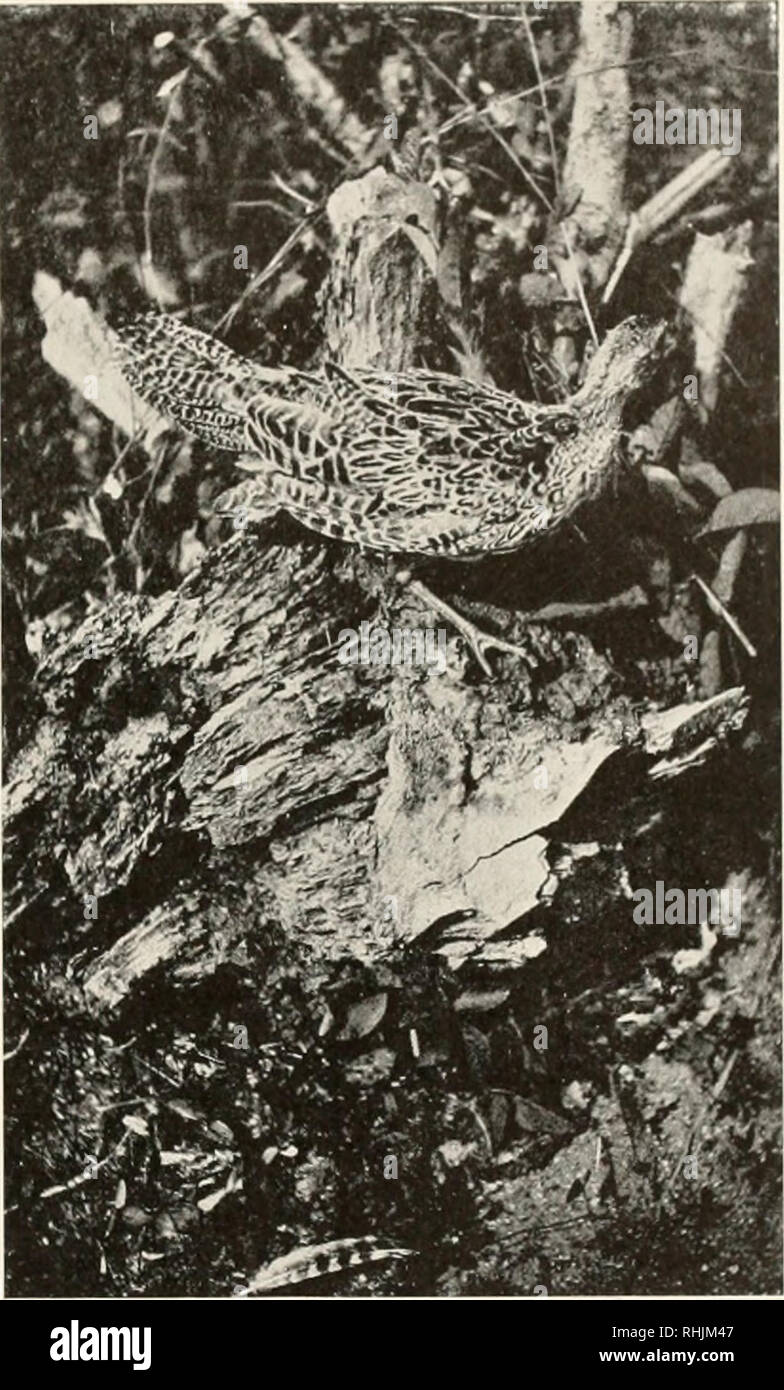. Birds of America;. Birds -- North America. PHEASANTS 35 cnl success. The Silver Pheasant is often seen in parks and aviaries, but the numerous other members of the genus, usually called Kaleeges (or Kalijes), are not often imported into this countr> The home of the genus is the Indo-Chinese countries and the lower ranges of the Himalayas. The Eared Pheasants, large, dull-colored birds of the higher ranges of central and eastern Asia, are known in American aviaries mainly through the Manchurian Pheasant, the most northeriN- member of the genus. These Pheasants lack the timidity so charact

Image details
Contributor:
Library Book Collection / Alamy Stock PhotoImage ID:
RHJM47File size:
7.1 MB (406 KB Compressed download)Releases:
Model - no | Property - noDo I need a release?Dimensions:
1228 x 2035 px | 20.8 x 34.5 cm | 8.2 x 13.6 inches | 150dpiMore information:
This image is a public domain image, which means either that copyright has expired in the image or the copyright holder has waived their copyright. Alamy charges you a fee for access to the high resolution copy of the image.
This image could have imperfections as it’s either historical or reportage.
. Birds of America;. Birds -- North America. PHEASANTS 35 cnl success. The Silver Pheasant is often seen in parks and aviaries, but the numerous other members of the genus, usually called Kaleeges (or Kalijes), are not often imported into this countr> The home of the genus is the Indo-Chinese countries and the lower ranges of the Himalayas. The Eared Pheasants, large, dull-colored birds of the higher ranges of central and eastern Asia, are known in American aviaries mainly through the Manchurian Pheasant, the most northeriN- member of the genus. These Pheasants lack the timidity so character- istic of most of the Pheasant family and would probably lend themselves readily to domestica- tion. At present their high price is practically prohibitive of any extensive attempt to domesticate them, but, should they become more common, they would be excellent subjects for such experiments. The English Pheasant {Phasianus colchicus) derives its specific name from the ancient countn, ^ of Colchis, on the eastern shore of the Black Sea. It was imported thence into Europe by the Greeks, probably under Alexander the Great, and was by them reared for food. Its propagation in con- finement was continued in the days of the Roman Empire, under which it appears to have been carried on throughout much of Europe and as far west as Britain. It was introduced into Ireland and Scotland before the close of the sixteenth century. It is now acclimatized practically all over Europe, and has been introduced into the United States, Canada, Australia, and New Zealand. Efforts to acclimatize Pheasants in the United States are of comparatively recent origin, though earlier than is popularly supposed. Richard Bache, an Englishman who married the only daughter of Ben- jamin Franklin, imported from England both Pheasants and Partridges, which he liberated on his estate in New Jersey, on the Delaware River near where the town of Beverly now stands. But, although he provided both shelter and food for